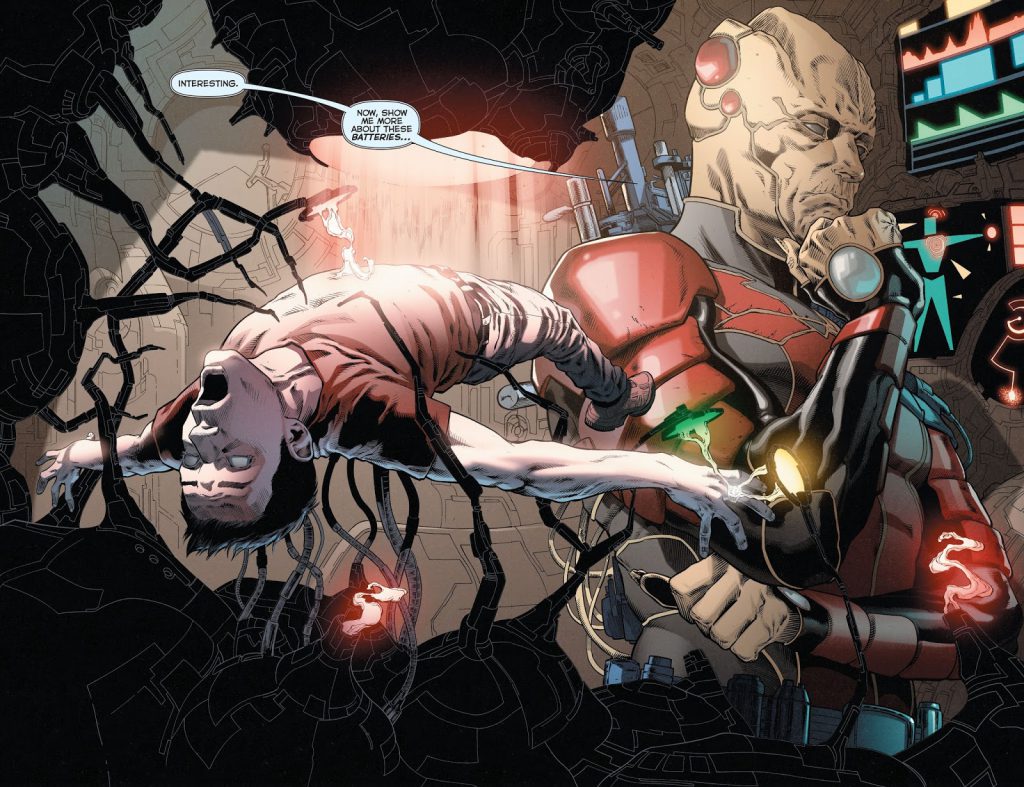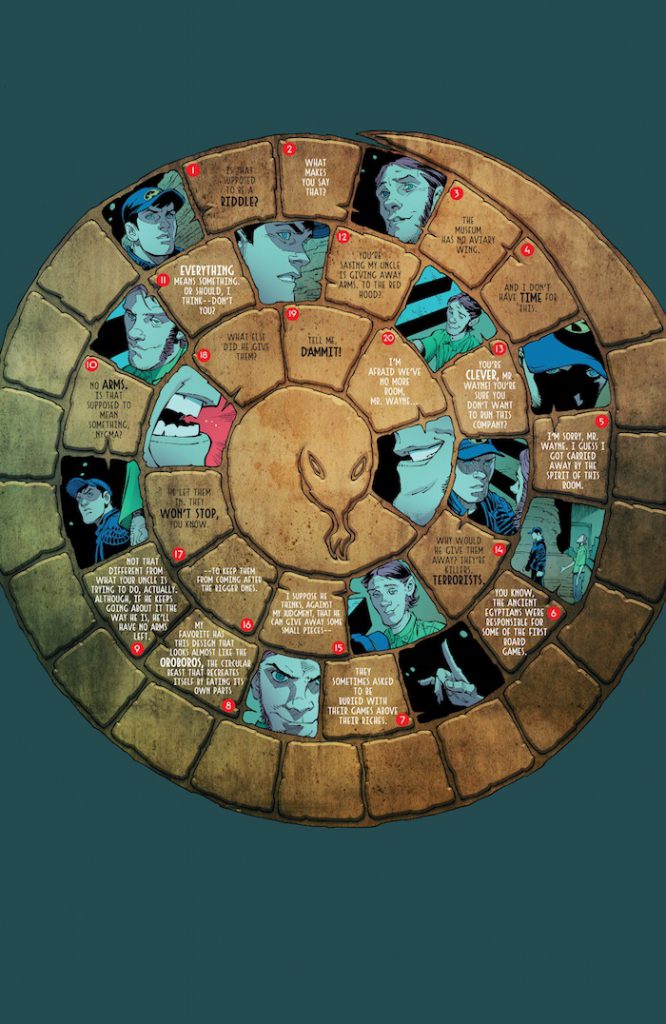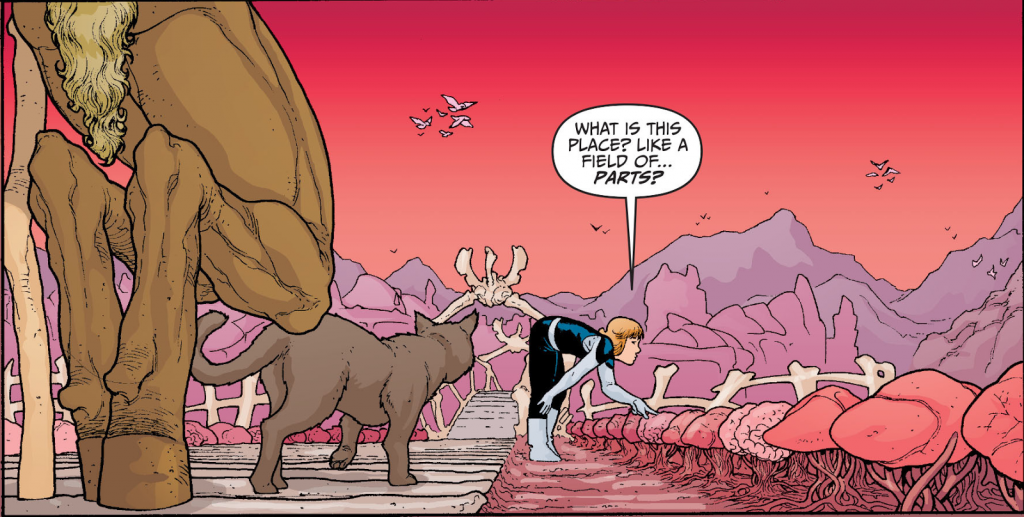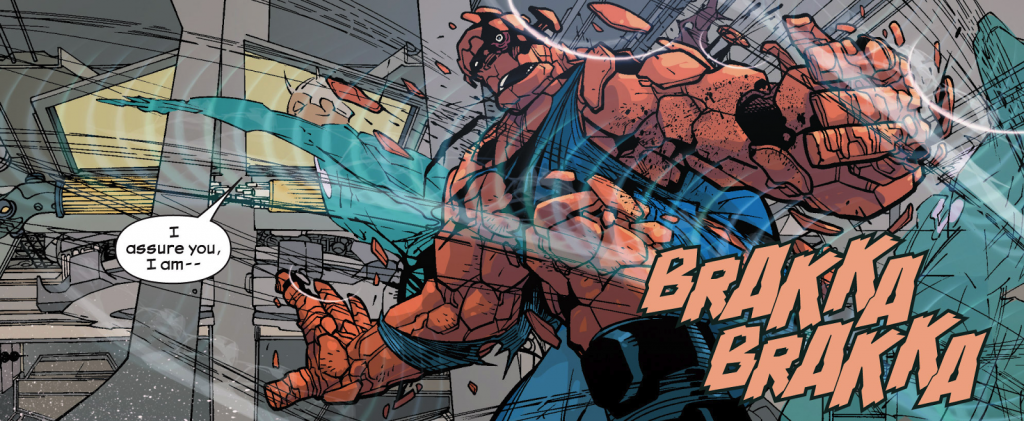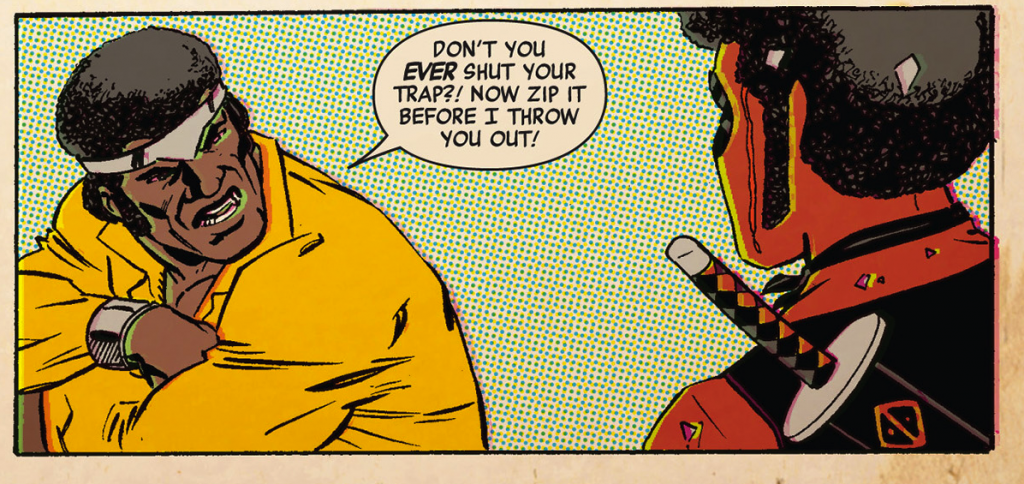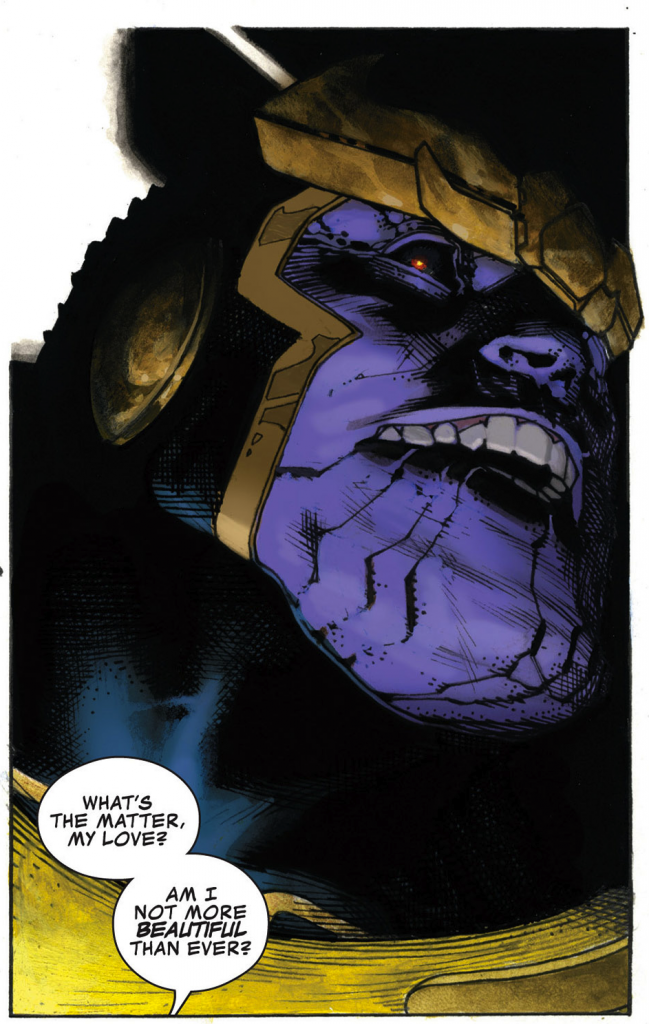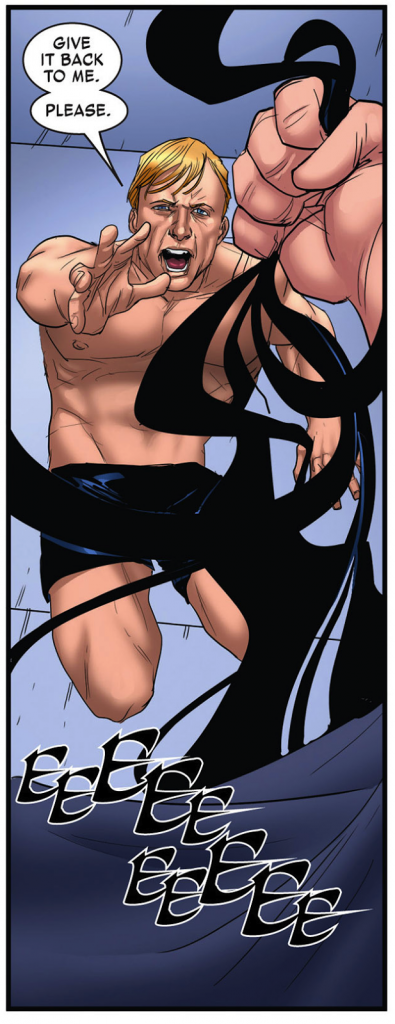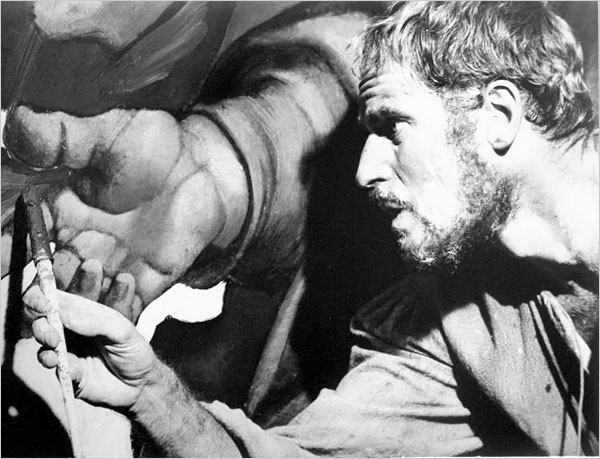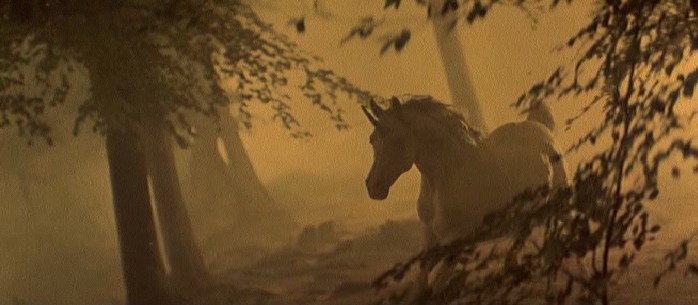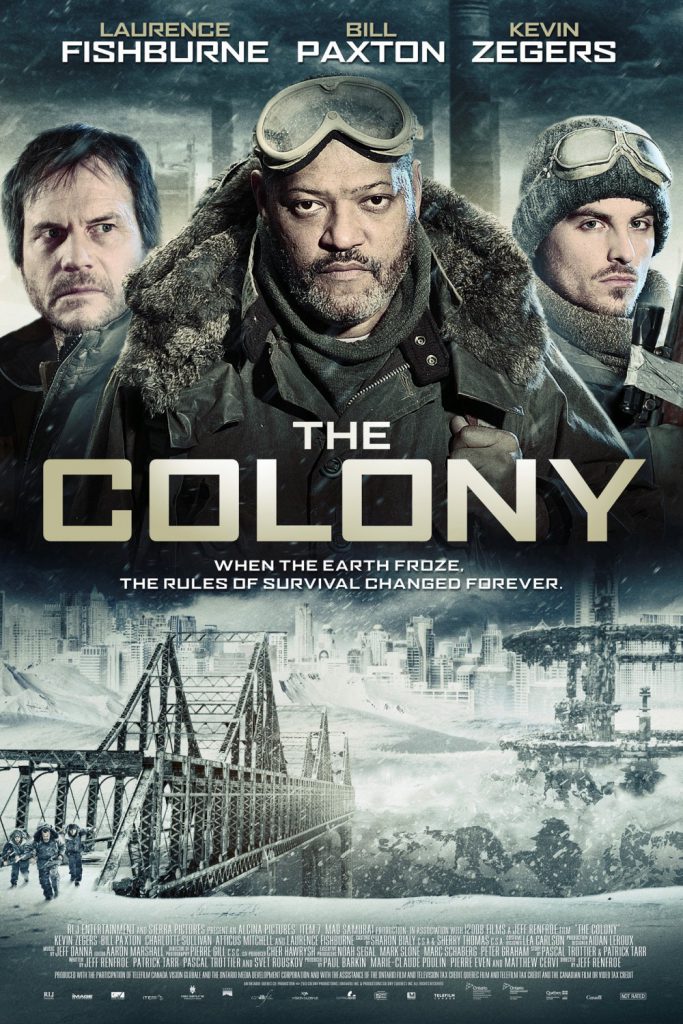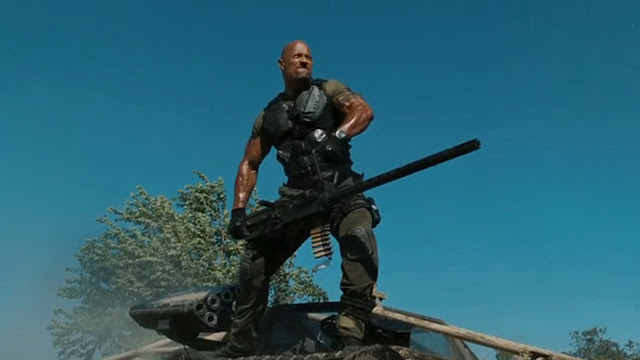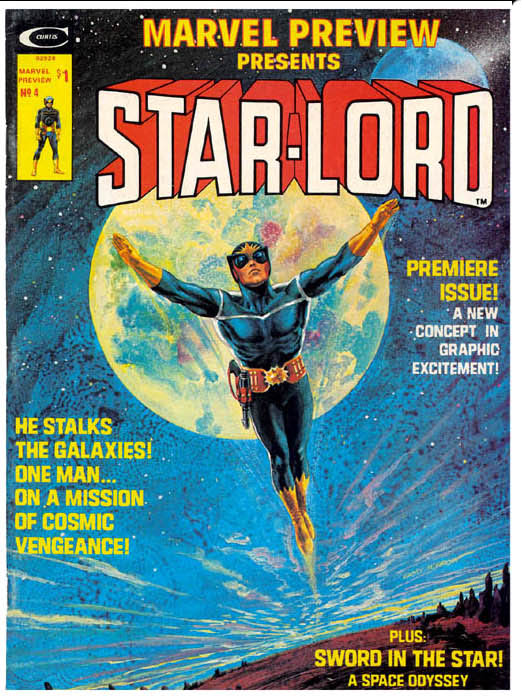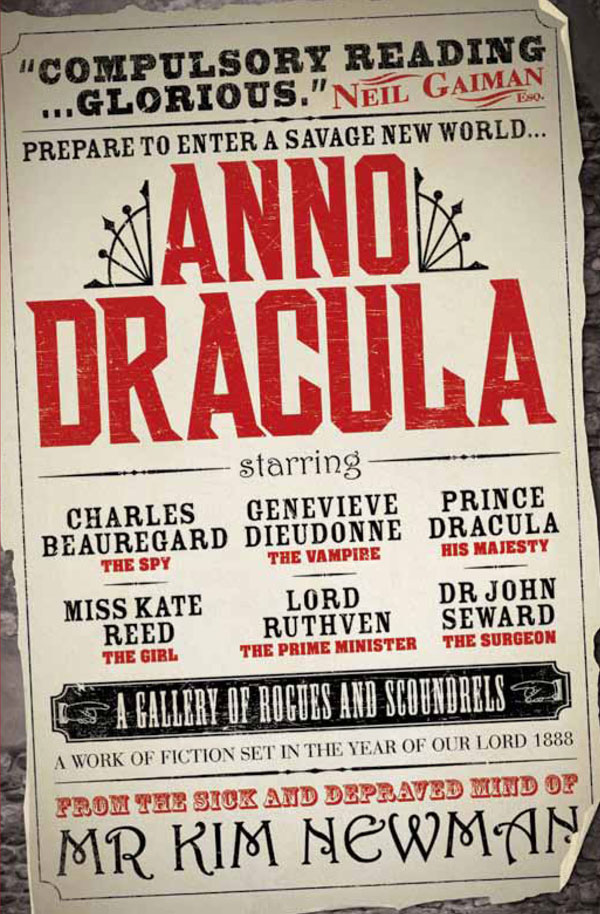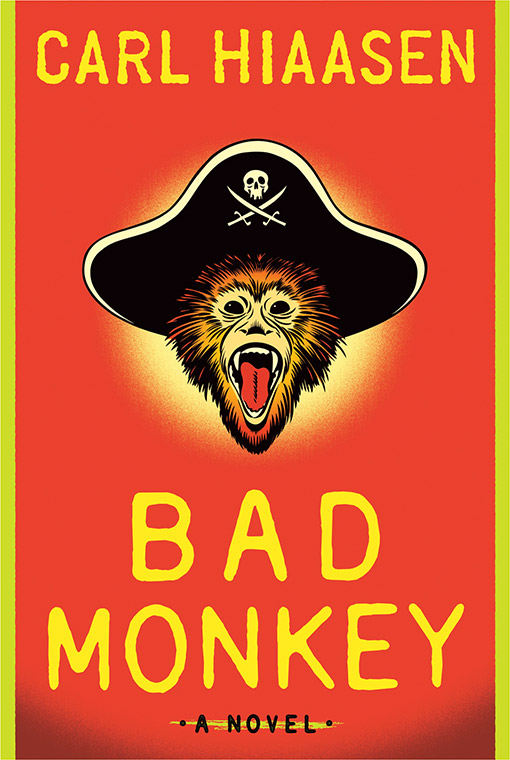Hey, all. Watching G.I. Joe Retaliation this week (see my comments further down the page), I was reminded of a comment Will Rogers, the famous American screen cowboy turned newspaper humorist, once made. “In Hollywood, the woods are full of people that learned to write but evidently can’t read. If they could read their stuff, they’d stop writing…”
I’m starting to ponder that observation more and more as the years roll by.
Anyway. Before we get to moaning about Tinseltown’s output, let’s celebrate the fact that I made it to 13 installments now, and am still (ahem) going strong!
I’ve always loved the Number 13; I was born on the 13th (December…add it to you calendar: same as actors Christopher Plummer; Steve Buscemi; Tony Curran; Jamie Foxx; Dick Van Dyke; producer Richard Zanuck; and someone named Taylor Swift, whom I know nothing about), so I hold the Pensive Numeral in the same fondness that some do the Number 7.
Right. Let’s launch into the last couple of weeks’ comic books.
Well. While I was wrangling with all kinds of Panzer 88 related developments (that’s the movie I’m making with my producer Gary Kurtz, if you’ve just tuned-in) this last week or so, I got to grit my teeth as I saw all my friends posting jolly Facebook messages from San Diego. Even my brother Andy was there, a guest on an Edgar Rice Burroughs panel no less!
Me, I had to make do with flipping the pages of comic books while dealing with actors’ agents back in the Big Orange. Oh, well. At least I didn’t get gouged an arm and a leg for a hotel somewhere outside the blast radius of a nuclear strike on the Convention Center.
Quelle horror! I received some grumbling about my bias of always beginning comic reviews with Marvel’s output, as I’d mentioned last time. Being a contrarian, I’d normally just cheerfully carry on that way regardless.
However, one day I would like to have the possibility of making some movies based on D.C. properties, so let’s just have some variety for a change. (At least, this once.)
Justin Jordan’s Green Lantern: New Guardians #22 was colossal fun. A gigantic hyper intelligent entity named Relic from a previous Universe imprison’s Kyle Rayner within a prison in his own mind (cf: the entire history of science fiction tropes), and teases all the information it can about the Lanterns and their rings from him, before vamoosing.
Relic is best described as a calculated cross between Galactus and Brainiac, and seems reverse-engineered by D.C. to provide precisely that function. I can’t help but wonder if we’ll see this character appear in a lot of future titles. Good issue.
There’s a lot going on in Scott Synder’s Batman #22, and Greg Capullo and Danny Miki’s clean and engaging art keeps it propelling along. After the Red Hoods try to heist stolen Wayne Enterprises weaponry from the Penguin’s blimp, Bruce Wayne ducks out of a party held for him by his Uncle Philip, and has an interesting exchange with his Uncle’s advisor, one Edward Nygma. There’s a lovely page splash panel almost in the form of a board game, with Bruce and Nygma batting repartee back and forth at each other, that’s worth the price of admission.
One of the better Bat-titles this past fortnight.
Animal Man is undergoing something of a resurgence. In #22, Buddy Baker has been captured by a group of transmuted Animal Rights Activists who want to tap into “The Red”, the animal kingdom’s morphogenetic field. (If you’re interested in Morphogenesis, as I am, I heartily endorse you reading the science books of Rupert Sheldrake, which will give you an interesting new perspective on things you hold dear.)
I’ve never warmed to this character before, but Jeff Lemire is penning this and getting it right in spades, and it’s all very reminiscent of classic Alan Moore era “Swamp Thing”. Thumbs up.
Wow. So, that was D.C. (Was it really worth starting with those guys this time around? Hmmmm.)
Okay: well. A Mighty March Across to Marvel, I guess!
Josh Fialkov’s Ultimates #27 is…gigantic. I mean, it’s staggeringly huge. There’s all kinds of parallel universe stuff going on here, and Carmine Di Giandomenico’s detailed artwork almost gives this issue a sensory overload.
It would be tiresome to list all the Avengers and Fantastic Four characters in their various plot strands, so I’ll cut to the chase by saying that the story this time is centered around the extraction of an Infinity Gem (which is revealed to be the “Debris” left behind at the moment of Great Cosmic Upheavals) from Tony Stark’s brain (and which itself had been causing Tony to believe there was a separate personality inside him.) This might be one you’ll have to read in sequence with previous issues, but I loved it.
I’ve heard some carping from fans who miss Peter Parker from Spider-Man now that Otto Octavius has body-swapped into Spidey. Well, not me. I’m enjoying Petey’s leave-of-absence, and Superior Spider-Man #13 was no exception. With super villains running around The Raft Supermax prison after Alistair Smythe The Spider Slayer causes havoc there, “Spidey” gets unexpected backup…in the form of The Lizard!
This was a rollicking installment and, as with previous issues, you can’t help wonder but what Doc Ock’s secret endgame is going to be.
If you’re a comic-book fan of a certain age, chances are that you were marked out as an easy target at school for being picked on. I was: the little bastards at my alma mater stuck “Space Freak” on me, for my love of Star Wars. It kinda makes me smile now, but it didn’t at the time. We’re living in enlightened times, my friends. These days, people are proud to wear their Geek Identities. In my day, it got you a big rock inside a snowball.
Anyhoo. You remember those little brats in Hell’s Kitchen that gave young Matt Murdock a rough ride, also? Well, in Mark Waid’s Daredevil #28, one of them all grown-up comes to enlist the blind lawyer’s help, and all kinds of memories come bubbling up. I’m hot-and-cold on Daredevil, but this one is a worthy installment.
Speaking of Daredevil, Lee Weeks takes writer/artist duty on Daredevil: Dark Nights #2. With New York shut down in a snowstorm, Daredevil has to head out and locate a crashed medivac chopper that was a shipping a human heart desperately needed for a little girl’s transplant. Good story, efficiently told.
I find Matt Fraction a very idiosyncratic writer, and for that I’m very grateful, as he’s elevated Hawkeye from being a potentially run-of-the-mill title. In #12, Fraction recounts the tale of down-and-out Barney Barton, Clint’s black-sheep older brother. With flashbacks to the childhood farm aplenty, the story centers on one night as Barney heads over to Clint’s apartment. This might be one of my favorite issues yet. Again, this is going to be aces in graphic novel form.
Gerry Duggan & Brian Posehn’s Deadpool #13 was another flashback episode to jive-honky 1970s New York, complete with ersatz vintage poor-printing effects.
There was a great deal to like in this ridiculous book, particularly one panel which had a bunch of goons pontificating on the potential future merits of Godfather III (which, for the record, I actually like.) Definitely one for some chuckles.
And…it’s a Deadpool Double Header! In more ways than one, as Cullen Bunn gives us Deadpool Kills Deadpool #1. When a black-clad parallel universe assassin Deadpool turns up in this reality to off Wade Wilson, and an entire cadre of Deadpools (including Lady Deadpool, and Dogpool) pops in to rescue him, you know that things are more serious than they seem. Especially when The Watcher makes an appearance.
Silly enjoyable stuff, and made all the more enjoyable by Salva Espin’s fabulous artwork.
Zeb Wells’ Nova #6 is pretty much a landlocked issue this time…but it’s nice to read. After vanishing for two weeks to hang out with the Watcher and defend the Earth from the Chitauri Space Whales (yes, the exact same ones from The Avengers movie), Sam Alexander is back home and having to explain to his mom and the School Principal where he’s been.
This is just a nice issue with a fourteen year old having to be just what he actually is: sometimes I forget what it was like to be a kid, and it’s nice to be reminded. I’m liking this Nova rejig. The best thing about it? It’s a comic book you can give to your kids and not be too worried about its content. I hope that doesn’t change.
It’s no secret that I have absolutely hated the amoral and loathsome first three issues of Jason Aaron’s Thanos Rising. Well, with issue #4, Thanos finally discovers the secret of the girl he loves (but if you know the character of-old, it won’t be much of a secret.)
I liked this issue, as it joined up with established continuity finally, and was respectful to the character. But I still feel the prior installments (and this one) should have come with a “Mature Readers” warning on the cover.
Mark Waid’s Indestructible Hulk #10 was nothing short of stunning, helped hugely by Matteo Scalera’s dynamic art.
This is an all-out action issue following directly on from #9. Hulk is teamed up with Daredevil to penetrate one of Baron Zemo’s weapons caches hidden in Hell’s Kitchen, and it all goes horribly wrong when Hulk is temporarily blinded. You adrenaline junkies will love this issue. Trust me on this.
Thunderbolts is always a hit-or-miss affair for me. Thankfully, Charles Soule’s #13 this time was a hit. After Flash Thompson has a mysterious encounter with a woman called Mercy, who plucks the Venom symbiotic right off him, Flash sits down with Thaddeus Ross to demand the truth about The Woman Who May Be Death.
This was a great self-contained single issue. Wish we could have a few more like it. It gets the coveted Briggs Nod Of Approval.
As I mentioned before: while I like the X-Men movies, I find the sheer weight of the amount of titles in this Marvel strand just too much to take, and getting through them is often a chore. However, Marjorie Liu’s Astonishing X-Men #64 shook off my ennui and delivered. Since arriving back from the Age Of Apocalypse, the world has been smothered in ice and snow, and it’s somehow tied-in to Bobby Drake, as murderous clones of Iceman are popping up all over the show.
There’s some beautiful imagery in this issue courtesy of artist Gabriel Hernandez Walta, and if you’re a fan of Thor you’re going to love his ice battles. I couldn’t recommend this one highly enough.
On the subject of Thor, we’re back with Jason Aaron. His Thor: God Of Thunder #10 was a little bit demented this time around, and I loved every moment of it. With the temporally-assembled Three Thors subdued, Gorr the Godbutcher prepares (finally) to activate the Godbomb. But you don’t think a bunch of Asgardians are about to let the Fall Of All Deities happen just lying down, do you? I say thee, “nay”! Esad Ribic and Ive Svorcina’s sumptuous artwork is the real star of this title, though, and makes every page a delight. This story is going to be a classic when it’s compiled into a graphic novel, and I’ll be there to snap one up.
And Thor continues! I must confess that I usually find comic tie-ins which act as precursors to upcoming movies fairly limp stuff (take a look at the pathetic Star Trek: Into Darkness issues recently, as a prime example.) So it was with a sigh that I ploughed into Christopher Yost & Craig Kyle’s Thor: The Dark World Prelude #2. Well, color me Mjolnir-ed! It was pretty darned good. The story picked-up during The Avengers movie, showing Darcy and Jane in Norway; then flitting back to the pitched battle in New York with the Avengers and the Chitauri Space Whales. Before you know it, the imprisoned Loki is being presented to (and disowned by) Odin, and we move swiftly on to learn of the invasion by Marauders on the planet Vanaheim, causing Asgard to mobilize its forces. I was surprised. You might want to check this issue out.
“*Horrywood! Horry-woooooooood ! *(1941, 1979)*”
Okay. Back to the task at hand. Movies!
I’ve watched a fair bit of “vintage cinema” as a safety-blanket the past weeks, mostly as an antidote to the depressing output from current moviemaking. Today, I re-viewed a particular favorite: the Charlton Heston-starrer The Agony And The Ecstacy from 1965; perhaps one of the more lively and engaging studies of an artist. (If you haven’t seen it and I tell you it’s about Michelangelo painting the ceiling of the Sistine Chapel, I could almost feel your colossal stifled boredom from here.
But, you’d be doing yourself a disservice if you think this is some dry religious tract: Heston as the obsessed painter wrings his hands masterfully as he skirts with madness in one of his great career performances, while Rex Harrison as the wily warrior-Pope keeps the story acidly propelled. With marvelous photography; sumptuous production design; and a wonderful score (five Oscar nominations for this baby), toss aside your latest Jason Statham smackathon for the afternoon and watch something that will stay with you and inspire you, for a change.) And in the last days, I’ve rewatched Hitchcock’s Suspicion, Notorious, Foreign Correspondent, Saboteur and Lifeboat (this latter has some extraordinary marriage of rear-projection screen and studio tank, which can still hold its head high amongst current CG technology.)
On a whim, I also decided to watch the Electric Unicorn edition of Blade Runner. This is a fan-edit that extends the movie out with salvaged and scavenged material (and the quality is extraordinarily good, considering), and takes the 1982 classic in a slightly different direction.
Fan-edits are weird things, I have to say. A recent fan edit of Prometheus very nearly made me cry, because the addition of numerous scenes and more importantly the excision of lot of utterly nonsensical plot drivel helped raise that disappointment up by quite a few IQ points, while simultaneously helping reduce my anger level.
With the Electric Unicorn Blade Runner, it’s pretty apparent the editors are hampered by what they can bring to the project. They don’t have “coverage” (multiple takes of any given scene, or footage from additional cameras used on the shoot), so they can’t hone their scenes to the same level the movie’s production team can. Not only that, but in several cases they’re obviously a little bit in love with the new material, and perhaps holding on to shots longer than they should instead of mercilessly cutting them down.
The Electric Unicorn is a version of Blade Runner which features the much-maligned Harrison Ford Voice Over.
I’ll go on record as saying that I love The Voice Over (and Ivor Powell, the film’s producer who co-incidentally happens to be a friend of mine, feels the same way.) It was there in 1982 when I saw the movie the day Blade Runner opened (well, okay…it opened on a school day, and I actually saw it the next day, a Saturday), and any version of Blade Runner I watch without seems unfinished and hollow.
What’s interesting here, is that the Electric Unicorn makers have taken even MORE voiceover from another source and when I say “more”, we’re talking TWICE as much. Now, as I say, I like the voiceover in the Theatrical Cut, and never feel that it overstays its welcome. In this version, though, there’s a percentage of new voiceover (say, 35 %) that works really well. But the rest really does feel obtrusive, and in some of it you genuinely can hear what we’ve been hearing for years: that Ford was simply droning the lines off the page.
Regardless of that, there’s just TONS of new stuff in here, expertly filched from extraneous sources. (As, I said, some of it is still badly in need of a trim.)
My favourite piece has to be Bryant and Gaff electronically spying on Deckard when he goes to visit Leon-blasted Rep-Detect Holden in his cryo-bed the SECOND time Deckard visits him. And the death of Tyrell, the maker of the Replicants, at the hands of Rutger hayer’s menacing Batty is way, way more gruesome than any of the legitimately-released cuts: even in today’s Hannibal gore-on-TV age, it’s still quite shocking.
If the studio had kept Tyrell’s death in the theatrical print, it would have been the only thing people would have been talking about that year. (Well, slight hyperbole, there. It WAS 1982, and that’s practically a Holy Year for cinemagoing.) There’s even a POST-CREDITS scene, with a last line of the movie spoken by Sean Young that actually made me go “Whoah!”
Very glad I saw it, and any Blade Runner fans will be rewarded with something new if they spend two hours on it. It’s still not polished and definitive, though…it’d be interesting if Ridley went back and did his own version of this. Just no Blade Runner 2 please. It really isn’t necessary.
Anyway. You’re fanboys and fangirls in the 21st Century, and you’re not here to hear an old duffer wax nostalgic about gems from times bygone. And so I present for you Today’s Newest Attractions.
First on the chopping block is the Lawrence Fishburne/Bill Paxton post-apocalypto The Colony.
This is an annoying movie. A few weeks ago during our Man Of Steel roundtable here at Forces Of Geek, I mentioned that the Kryptonian Genesis chamber reminded me as a plot-device of the Norwegian’s Svalbard Global Seed Vault.
Well, lo-and-behold! In The Colony, following a disastrous climate shift the Earth has been ravaged by continuous snowfall and is permanently arctic and overcast (the movie could almost be marketed as The Day After Tomorrow 2). And a plucky band of survivors are holed-up in a research facility not unlike the Svalbard installation, continuing to cultivate plants in the hope that there will one day be a weather-break to allow vegetation to flourish again. I very much liked this setup (although one wonders if there’s no plant life anywhere, what is driving the Earth’s biosphere), but unfortunately this is a movie of two halves.
Fishburne is the level-headed leader of the outpost, while Paxton is the enforcer who seems (irrationally) gung-ho about taking outside and popping a bullet through the skull of anybody who manifests the signs of a (not-especially-well-delineated) viral condition. Why Fishburne’s character (his name’s “Briggs”…you can always trust a “Briggs”) would let someone with such faulty logic run around with a gun is beyond me, especially when Fishburne leads an expedition to another nearby outpost following an S.O.S., and Paxton is left in charge. I said this was a movie of two halves: well, in the second half we discover a pack of roving cannibals have made a smorgasbord of the neighboring facility and are on their way now to the seed vault.
Plot gives way to tiresome shooting; blade-hacking; and explosions, saddling the story with an open (and slightly logic-free) ending which leaves you wondering if you’ve just watched a movie or a very expensive pilot for a TV show. The production design for the movie is impressive (the sets being particularly effective); unfortunately, some of the technical acumen to pull-off the post apocalyptic world leaves a deal to be desired, as the stage-bound photography and much of the work by Montreal-based VFX company Visionglobale (presumably having to manage on a tight budget) seldom looking more convincing than videogame cut-scenes, which is all a shame as the movie is nicely designed. I’m not much for giving numerical marks, but I’d give The Colony a 6.5 to 7 out of 10 for its first half, crashing into an avalanche of 4 out of 10 for the second.
Also up was Monsters University, prequel to Pixar’s (far superior) Monsters Inc. I’ve been disappointed by Pixar’s output of-late: M.U. was happily only a minor let-down, but…I still have to wonder why their output isn’t quite as sharp as it has been. Monsters U began with a surprisingly lacklustre first half hour as a youthful Mike Wazowski turns up at the titular seat of learning to begin his higher education, and only really kicked into final gear in the third act. (Also, I can’t help but wonder at some of the logic rules in this movie: why does everyone freak out when there’s a possibility of children crossing into the Monster World with their “contagion”…when the Monster Government send their employees into the selfsame environment without any form of protection? I mean, huh?)
Perhaps more depressingly, I also saw G.I. Joe: Retaliation, which has to be one of the most dismally insulting films I’ve ever seen. I was crushed to see much money and talent can be lavished on something so terminally stupid: at the 45 minute mark, I checked my watch and couldn’t believe it wasn’t already two-thirds the way over.
It also seems to have made a lot of money for the studio, too…which pretty-much guarantees we’ll inevitably see another probably-awful sequel.
Moving across to the Tiny Screen In The Corner Of The Room, I was interested to see the Guardians Of The Galaxy-featuring episode of last week’s Ultimate Spider-Man cartoon. It’s very apparent that Marvel are building awareness for the upcoming Guardians movie by shoe-horning both them and Star-Lord right across the board on their various product lines. I mean, hey. it’s synergy, and it’s marketing, and you have to applaud them for crossing all the various platforms and being able to make that happen.
As regular readers here will know, I have loved Star-Lord ever since I saw the Claremont/Byrne storyline serialized as a back-up strip in Star Wars Weekly back in 1978, so for me transmuting that character I adore into a rebellious youthful version is something of a demographic sop cop-out. I’ve been fairly troubled by what I’ve seen on the upcoming movie so far (the props on display at Comic Con made Star-Lord’s helmet look like a Silent Hill welder’s mask, and there were a pair of guns that looked suspiciously copied from The Black Hole), and the version of the Guardians team portrayed in Ultimate Spider-Man this week pretty much filled me with horror and made me fervently hope it’s only an animated rendition and not representative of what the movie team will be like.
Here’s my thought about a Guardians movie. Take it with a grain of salt. Each of the Avengers characters are iconic, so that movie was a slam-dunk obvious hit. Individual Marvel movies with each of the superheroes, culminating in a froth-at-the-mouth fanboy frenzy at all of the reaching critical mass. (Even if the movie wasn’t that great).
But Guardians? Let’s be serious, here. It’s a bunch of characters that most people have never really heard of, and already assembled in a team with no origin story for any of them. It really is a B-Team (and I’m being extremely generous) Avengers. I can’t help feeling putting this movie out front-and-center like this is a mistake. Had I called this one, there would have been a single Star-Lord origin story (with Star Lord maybe turning up in the coda for Avengers 2: Age Of Ultron) before seeing Guardians.
It would be disappointing if they smushed Star-Lord’s origin into just the first 15 minutes of Guardians Of The Galaxy, rendering any further standalone movie problematic.
Between Dead Wood, And Screens Ill-Read By Sunlight
So, I also finished some books! Huzzah!
Sitting by the Swedish poolside as I worked on my skin-cancer during a baffling burst of sunshine, I read The Richard Burton Diaries, which were published last year.
Burton would be ashamed that it’s taken me this long to read his collected tomes: he himself was a prodigious reader. Although he ploughed through both high and lowbrow tomes, it must be said…I was surprised he was such a pompous snob, bordering on being a misanthrope. Like Stanley Baker, Robert Shaw, and other towering and manly British actors of his period, I loved the fiercely Welsh Burton as an actor and screen presence, although it must be said his performances (my personal favorites being Becket, Where Eagles Dare and The Medusa Touch) were often tinged with cold and disdainful arrogance. Many actors are unlike their screen counterparts, and so it’s disappointing to discover that Burton the man seemed to personally reflect his avatars. He didn’t even particularly like film in his later years (although in the Welsh backwater he hailed from, the local bijou fleapit was his temple).
Burton was a mass of contradictions. A generous fellow, but also a selfish hedonist who didn’t suffer fools one iota. And, in his dotage by his own admittance, he was a fall-down drunk. Being in the form of a journal rather than an autobiography, The Richard Burton Diaries is sometimes hard-going: there’s a limit to how many times you can read about somebody eating breakfast and bathing after all, and there’s an infuriating lack of substance to his anecdotes (no mention at all of Where Eagles Dare during its filming, which could have been fascinating.) I did find the book ultimately absorbing, but I certainly don’t think it’s for everyone (Melvyn Bragg or Michael Munn’s biographies may give a better overview) unless you have a particular interest in Burton, the interior man.
I also revisited an old-ish favorite of mine: an expanded edition of Kim Newman’s marvelous horror novel Anno Dracula, which I first read back in the mists of 1992. In the interests of transparency, I have to confess to having a history with Kim. When I was a spotty trainee cameraman in London in the mid-eighties, Kim and I would hang out at lunchtime at the back desk of the sci-fi store Forbidden Planet 2 on St Giles’ High Street, pondering the state of the genre (or, as it’s sometimes called, “Gossiping”.) Many years later as a newly-agented screenwriting squab, I tried to set-up as a film his fantastic Anno Dracula WWI sequel book, The Bloody Red Baron. That’s a project I’d still like to do, although in our discussions since, Kim has gently maintained he would still rather see Anno Dracula done first.
It’s not hard to see why. Years before Alan Moore unleashed his more-trumpeted League Of Extraordinary Gentlemen comic book upon the world, Kim was quietly putting out these surprisingly similar books, which pit a staggering array of literary and cinematic character against one another on a world stage. Anno Dracula has a simple and elegant setup: what if, following the events chronicled in Bram Stoker’s Dracula, Dracula had defeated Van Helsing’s band and subverted both the British Monarchy and Albion’s society in general? Stirring stuff!
This edition of the book has some engrossing supplementary material, including explanatory annotations of where the more obscure characters that feature have been plucked from, as well as an extract from Kim’s own screenplay adaption of A.D.: product of an abortive attempt to film the book. (Interestingly, one of the two producers involved in that adaptation are currently partnered with me on Mortis Rex, a Roman film project.)
Maybe Kim’s right, and Anno Dracula should be filmed before “Red Baron”.
Hmmm.
Anyway. If you’re a vampire fan that’s wading through the glut of pap sprung onto the marketplace post-Twilight and True Blood”, and you haven’t read Kim’s books in this series, do yourself a favour: skip the rest and head right to these. They’re gems, and you won’t regret it.
Stepping away from Things Fanboy for a moment, I also polished-off Carl Hiaasen’s Bad Monkey.
No, that is not a euphemism for something.
For those unfamiliar with Hiaasen’s work, the Florida-based novelist tends to pen crime novels, with gonzo twists.
His characters are often dim or outlandish, and do mind boggling things that not human being would do, often with an ecological slant of some kind. (Think of him as literature’s version of the Coen Brothers’ movies.)
In this, a demoted cop teams up with a foxy Cuban coroner to solve the mystery of a severed human hand caught on a Florida fishing trip. There are insurance scams and dopey incidents a-plenty, and the “Bad Monkey” of the title is a crazed animal rumored to have been Johnny Depp’s co-star in one of Disney’s Pirates Of The Caribbean movies. No, I’m not kidding you.
Hiaasen is always an entertaining read. I felt this one was a little on autopilot and a little too similar to some of his recent output, but…you know.
You can’t criticize a shark for eating, which is what it does best. It’s a decent summer beach read.
In A Place Once Ruled By The Cathode Tube
On TV this week, fortuitously, has been a further explosion of Richard Burton, timed to tie-in with the Richard Burton Diaries as mentioned above. The first of them, Burton And Taylor, was a character study of the Welsh thesp during during a notoriously awful Broadway production of Noel Coward’s play Private Lives, in which Burton starred with his several-times-married partner Elizabeth Taylor.
The BBC has for a long time been producing quality biopics under its BBC 4 banner (To my mind, one of the best being Einstein And Eddington with the genre-friendly super duo of Andy Serkis and David Tennant, the latter giving what I consider a career-best role, and a highly recommended viewing). Now, allegedly, budget cuts have “forced” the BBC into axing its BBC 4 drama programme, with Burton And Taylor apparently being this channel’s (current) swan-song.
This decision, I can’t help feel, is one of the bloody stupidest decisions the venerable broadcast institution has ever made. Particularly since Burton And Taylor…well. Was a bit boring?
Having just finished reading the Burton Diaries (see above), I can’t help but feel writer William Ivory hadn’t done much research on Burton himself. For all that it was mercilessly shredded by the critics, the American Lindsay Lohan-starring TV movie Liz And Dick (set during the time of the shooting of Cleopatra) seemed to me slightly more accurate (which considering it was fairly sensationalist, is a great compliment to that production compared to this!), and the performances there less caricatured. Grant Bowler’s Burton had more gravitas (and a Welsh accent that varied less) than Dominic West’s here. (West is an actor I admire greatly, but his attention to detail here seemed to wander). Burton, a voracious reader with a photographic memory, was barely portrayed holding a book in this somewhat tedious documentary. See it if you have to, but it’s not exactly what I would consider a great send-off for drama on BBC 4.
Far better was the BBC’s actual 30 minute documentary about The Richard Burton Diaries also this week and commissioned as part of their “Reputations” series. It was a treat to see the actor’s actual diary notebooks (bound in camel-colored leather, with a silver “R.B.” on the cover) stored in the archives, and a wealth of television and film clips supplemented the actor’s thoughts (read very well in a Burton impersonation by actor Josh Richards), which amounted to 400,000 words until just before his death at home from a cerebral haemorrhage in 1984, aged 58. The doc is well worth a look: indeed, in an article in Britain’s Daily Mail newspaper, it seems the BBC are already in trouble after Sally Burton (his final wife) lent the TV show a diary, which the station promptly lost. Catch it while you can.
“On The Radio”
“On the *what?!” I hear you whippersnappers exclaim. “Podcasts!” I snap back at you irritably, translating the phrase into 21st Century yoofspeak. Yes, it’s Summer: and with that, there’s grass to be cut and fences to be painted. In short, hours of mind-numbing boredom.
Happily, I’m British, and the BBC have a remedy to that tedium, in the form of their online audio archive.
One of my favorite BBC Radio shows for downloading and stacking up on my iDevice is “Desert Island Discs”. This weekly slot features a given celebrity telling anecdotes about their lives, while playing 10 of their favorite songs that they would take to a desert island.
It’s an interesting format that sometimes makes the people drop their guard in ways regular interviews wouldn’t allow.
This week, I’ve been listening to shows from decades gone by, featuring actors Michael Palin; Eric
Idle; Jonathan Pryce; and Alec Guinness, and spy novelist Len Deighton.
Amongst little gems I learnt, was that Deighton wrote the screenplay to the box-office musical bomb Oh What A Lovely War (which I happen to like, regardless), but took his name off the credits as he felt they hadn’t nailed the tone of the movie properly. And that very-British rom-com screenwriter Richard Curtis was born Czech. And the fascinating notion that “Obi-Wan” Alec Guinness was shipwrecked briefly when his boat went down in World War 2. It’s also interesting to note how people’s tastes intersect: fellow “Monty Python” jokesters Palin and Idle separately chose Edward Elgar’s “Nimrod” on their Desert Islands, for being a terribly British tune. Good boys. I heartily approve.
In case you look at the names above, and think these are probably only shows your parents would enjoy, other recent celebrities have included Hugh Laurie; Damien Lewis; Bear Grylls; Alice Cooper; James Ellroy; and the like.
God bless the BBC. At least, before the British Government dismantles it completely…






































































































